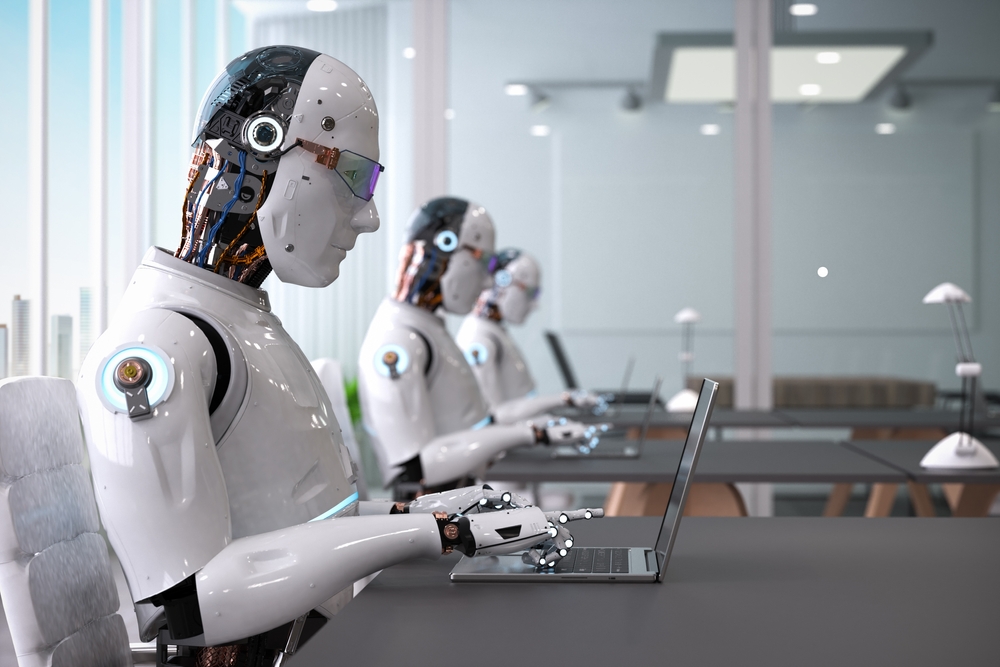Human-Centered Interaction Models for the Workplace
How leading companies design human-AI collaboration to turn AI spending into measurable business value

As organizations race to integrate AI into their operations, a critical question often gets overlooked: How should humans and AI actually work together? It’s not enough to simply deploy the latest AI tools and hope for the best. The way employees interact with artificial intelligence fundamentally shapes whether your AI investments deliver exponential productivity or become just another expensive tech burden.
According to BCG’s recent research, only 5% of companies achieve AI value at scale, while 60% report minimal revenue and cost gains despite substantial investment. This isn’t a technology problem; it’s an interaction problem. So rather than simply trying to buy more AI tools, savvy leaders are deliberately reimagining work to fuel seamless human AI collaboration.
What Are Human-AI Interaction Models?
Human-AI interaction models define the patterns and frameworks for how people engage with artificial intelligence systems. Think of them as the “rules of engagement” that determine who does what, when AI steps in versus when humans take charge, and how information flows between human expertise and machine capability.
These models go beyond simple user interfaces. They encompass the entire relationship structure: Does AI wait for commands, or does it proactively suggest actions? Do humans review every AI decision, or does the system operate autonomously? Can employees understand why AI made a particular recommendation?
The AI productivity gap often stems from a mismatch between how AI systems are designed to work and how humans actually need to work with them.
Why Do Human-AI Interaction Models Matter?
Curious why understanding how human-AI collaboration works matters? Here are a couple of reasons:
#1. Enhanced Human Capabilities
Well-designed interaction models amplify what humans do best: creativity, contextual judgment, relationship building, and strategic thinking. They free employees from repetitive cognitive tasks so they can focus on higher-value work.
Future-built companies see employees shift contributions to strategic thinking, judgment, and human-AI collaboration, with more than 50% of employees expected to be upskilled in AI in 2025.
#2. Improved Decision-Making
Human-AI interaction models determine how effectively AI surfaces insights, flags risks, and provides context for human decision-makers. AI is already creating tangible value, with some companies achieving 30% cost avoidance through AI-powered infrastructure monitoring and predictive maintenance when fully deployed.
Poor interaction design leads to either paralysis (humans overwhelmed by AI-generated data) or recklessness (humans blindly following AI recommendations). Effective models create balanced partnerships where AI augments human judgment.
#3. Build Trust With AI
According to MIT research, 95% of enterprise AI pilots are failing, with the core issue being flawed enterprise integration rather than AI model quality. A major factor is employees simply not trusting or understanding the AI they’re supposed to use.
Models that prioritize transparency, explainability, and human oversight build trust by giving employees visibility into how AI works and confidence that they maintain meaningful control.
Main Types of Human-AI Interaction Models
Some of the main types of human-AI interactions include:
Direct Control Models
In direct control models, users explicitly command AI systems to perform specific tasks. Examples include ChatGPT prompt interactions or Siri-style voice assistants that wait for your command before taking action.
This model works well for tasks where context varies significantly or human judgment is essential for framing the right question. The downside? Research shows that 54% of employees struggle to know when and how to use AI tools, feeling overwhelmed by options. Direct control models require significant enablement investment to deliver value.
Human-in-the-Loop (HITL)
Human-in-the-loop models position AI as a powerful first-draft generator with humans providing critical review, correction, and final approval. The AI handles initial processing, but humans remain in the workflow to validate and authorize outputs.
This model is particularly valuable in high-stakes contexts: medical diagnosis support, legal document review, financial fraud detection, or content moderation. HITL provides a safety net while still capturing efficiency gains.
The key challenge is avoiding the “rubber stamp” problem, where human reviewers become complacent and stop critically evaluating AI outputs.
Collaborative Interaction Models
In collaborative models, human and AI work side-by-side as genuine partners, each contributing their unique strengths in real-time. Both human intelligence and artificial intelligence are actively engaged throughout the workflow.
Future-built companies are moving toward hybrid workflows based on human-AI collaboration. These organizations design workflows where AI handles pattern recognition, data processing, and scenario modeling while humans contribute contextual knowledge, stakeholder management, and strategic judgment all happening simultaneously.
Proactive AI Models
Proactive AI anticipates user needs and takes action without waiting for explicit commands. Examples include smart email categorization, predictive text completion, calendar assistants, or monitoring systems that alert you to anomalies.
The power of proactive AI is reduced cognitive load, because employees don’t need to manually trigger routine processes. The risk is that poorly designed proactive AI becomes intrusive. Effective proactive models maintain user agency through easy override mechanisms and transparency.
Transparent/Explainable AI Models
Across all interaction types, explainability is increasingly recognized as critical. Transparent AI models help users understand the reasoning behind AI outputs which data influenced a recommendation, what patterns triggered an alert, how confident the AI is.
This transparency builds trust, enables humans to identify errors or biases, supports learning, and provides accountability.
Challenges in Designing for Human-AI Interaction
Some of the top obstacles that leaders should look out for when designing for human-AI interactions include:
Balancing Control and Autonomy
One of the trickiest aspects of interaction design is calibrating the right level of autonomy for AI systems. Too much human control sacrifices efficiency; too much AI autonomy risks errors or triggers employee resistance.
The best companies reconfigure workflows to combine autonomous agents with human oversight, maximizing value and adoption. The right balance often varies by context, user expertise, and stakes.
Avoiding Overtrust or Misuse
One of the biggest risks of good AI is that it works too well, leading users to overtrust outputs without sufficient critical evaluation. This “automation bias” causes people to accept AI recommendations even when human judgment should override them.
The flip side is undertrust, where employees ignore valuable insights. Effective interaction design helps calibrate appropriate trust through transparency, confidence indicators, and training.
Usability in High-Stakes Contexts
When stakes are high – patient safety, financial accuracy, security decisions, interaction models must support rapid comprehension and confident action under pressure. Agents present new risks, and 72% of companies already report unmanaged AI-security risks.
High-stakes contexts require multiple safeguards: clear visibility into AI confidence levels, easy override mechanisms, comprehensive audit trails, and failsafe designs.
Handling Uncertainty and Errors
AI systems are probabilistic, not perfect. Effective interaction models acknowledge this reality and help users work productively with imperfect AI.
This means designing for graceful failure: clear error messages, easy correction mechanisms, and workflows that don’t catastrophically break when AI produces unexpected outputs.
Conclusion
The difference between AI success and failure isn’t about having the most advanced models; it’s about designing effective human-AI collaboration. The right interaction models determine whether your workforce embraces AI or struggles with it and whether your investments deliver ROI or gather dust.
Getting this right requires three critical capabilities:
First, you need strategic visibility into where different interaction models will deliver the greatest impact. Gloat Signal helps map the work actually happening across your organization and identify which tasks are best suited for various types of human-AI workflows.
Second, you need to embed AI effectively into daily workflows. Mosaic provides work orchestration that helps employees understand when and how to use AI for specific tasks, with embedded guidance and task-specific prompts that drive adoption right in the flow of work.
Third, you need a workforce prepared for human-AI collaboration. Ascend delivers targeted AI enablement programs, connects employees with AI-proficient mentors, and guides career shifts as roles evolve, building the AI fluency your organization needs to thrive.
Getting interaction models right is how you turn AI spending into AI value – and Gloat provides the platform to make it happen. Ready to see how it works? Test drive Gloat Signal to learn how you can maximize the ROI of your AI investments.




